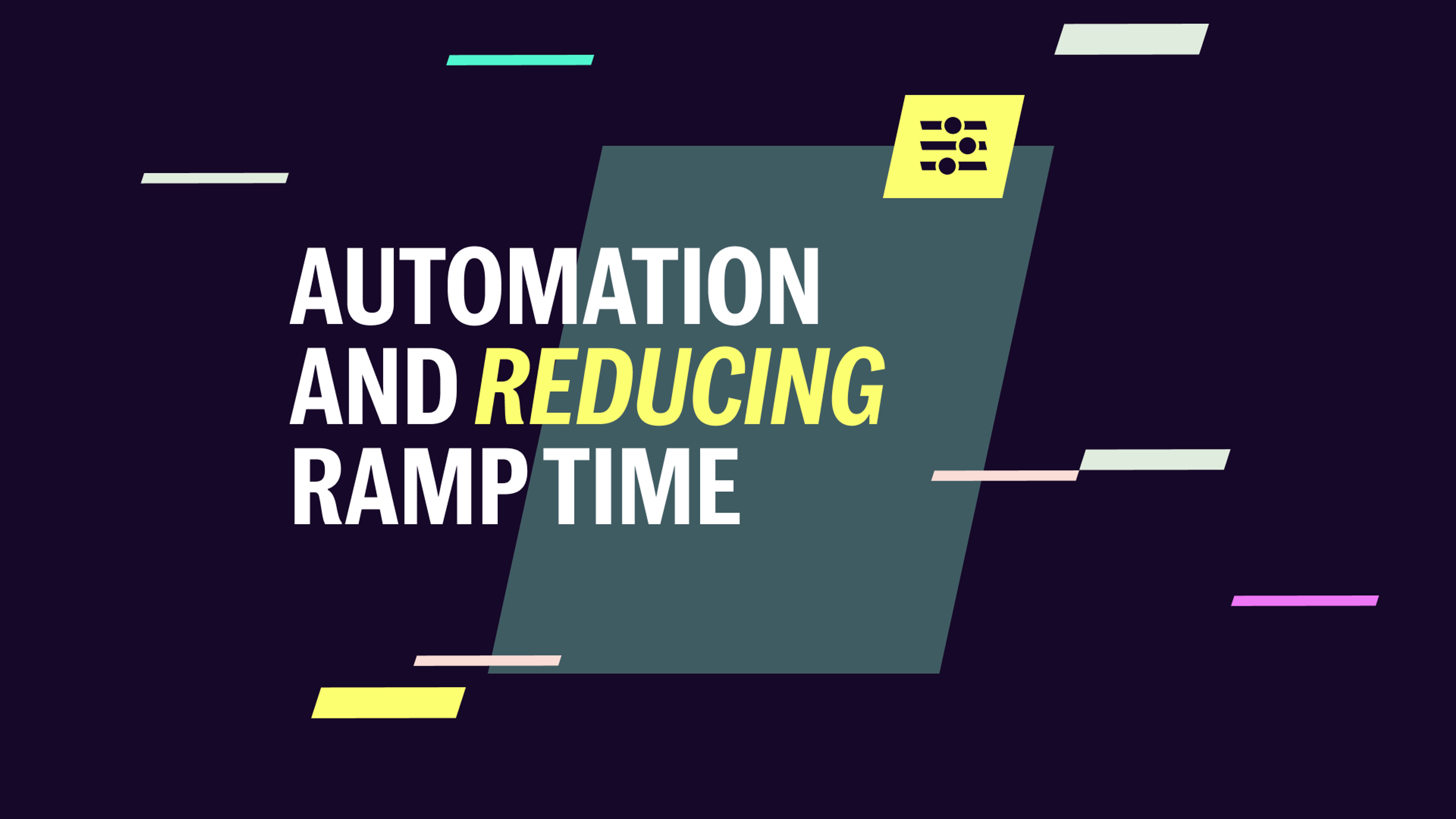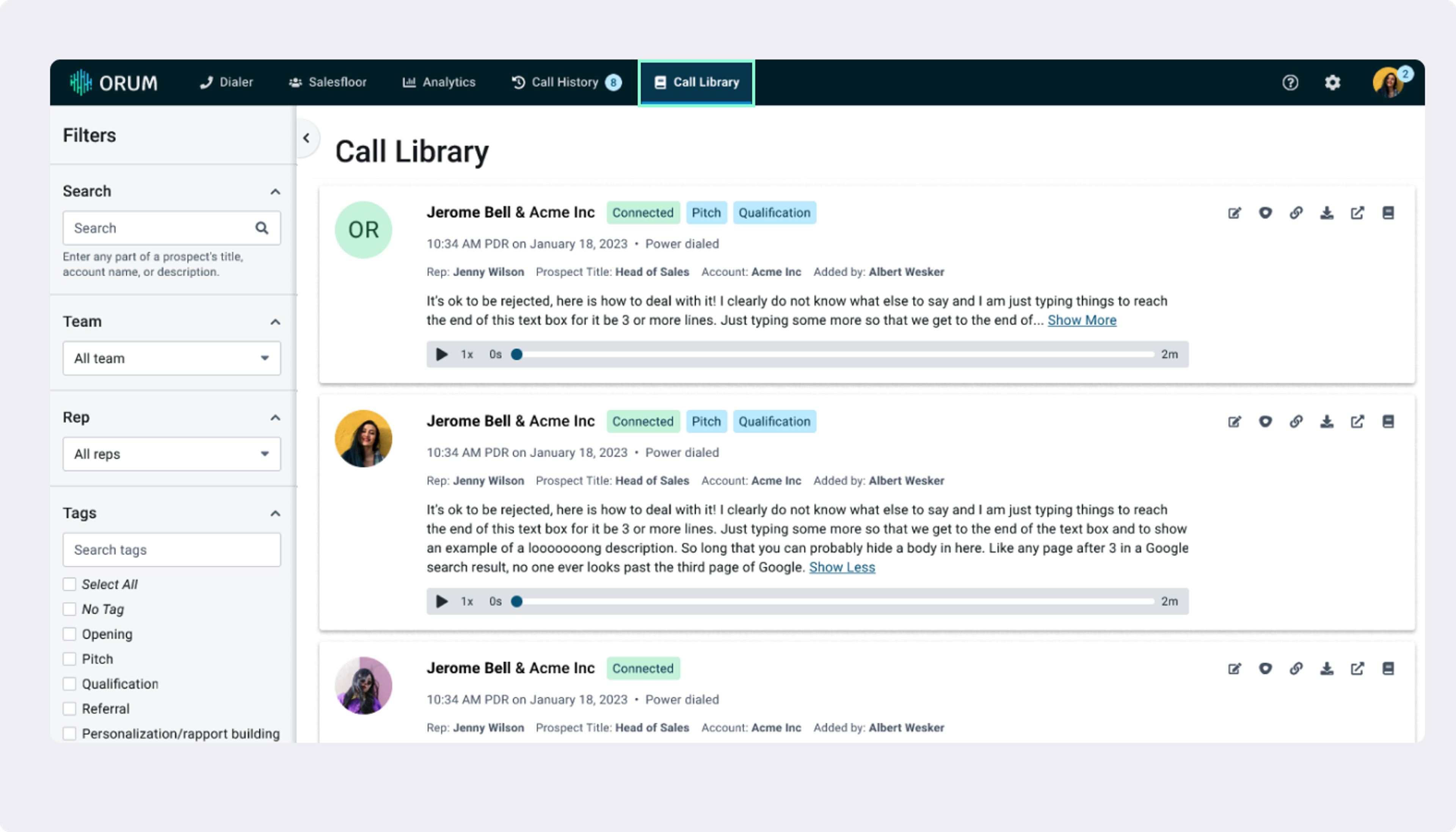How to Decrease Ramp-Up Time with Automation


If your onboarding, training, or operational processes aren’t fully optimized, your reps are taking too long to hit their quotas.
This means the metrics by which your performance is assessed—such as time to productivity, revenue growth, and customer acquisition rates—are also suffering.
The good news is that you can automate key onboarding process elements to reduce ramp-up time drastically.
You can kill two birds with one stone with the right tools and strategies. The new sales reps will get up to speed quicker without feeling overwhelmed, and you’ll have an optimized sales team that’s more productive and effective at converting leads.
Promote learning, enhance performance
With Orum, you can automate key processes, reduce ramp-up time, and centralize your call data.
Request a demo
How to calculate ramp-up time
First, you need to calculate how long it takes for new sales hires to reach full productivity. This is the only way you’ll be able to manage expectations and forecast revenue growth properly.
There are three main methods for calculating ramp-up time, but not all are based on performance metrics. Below is a breakdown of each method.
1. Calculating the ramp-up period based on the average sales cycle length
With the first method, you’ll use the length of your sales cycle as a baseline.
For example, if your sales cycle takes three months from outreach to close, ramp-up time is set to match that. Some companies add an extra buffer (e.g., another 90 days) for new hires to adjust and become fully productive.
Works best for: Fast-growing teams with shorter sales cycles. In contrast, companies with longer sales cycles risk extended periods of low productivity, which can negatively impact revenue.
🧠 Good to know
The average ramp-up time for new sales reps is considered to be the company’s sales cycle + 3 months.
2. Ramp-up time based on experience level
This method starts with the sales cycle length but adjusts based on the sales rep’s experience.
Less experienced hires, such as recent graduates, may need extra time for training and skill-building. Seasoned professionals who come from a competitor might reach full productivity faster.
Works best for: Teams that hire reps with varying experience levels. This is because it helps you set expectations and training programs based on each individual salesperson.
3. Ramp-up time based on time to reach full quota
Rather than using sales cycle length, with this method, you focus on how long it takes for new reps to reach full quota attainment.
Here, you focus on tracking sales productivity. You can then easily compare new hires against previous ones and use their performance as a benchmark.
Works best for: Companies with inconsistent sales cycles. It also works for those selling across multiple markets. Since you focus on real results and performance metrics, you get a more accurate measure of ramp-up time.
🧠 Good to know
If you’re struggling to benchmark the performance of new hires, you should read The 2024 State of the Sales Development Report. On average, 70% of respondents expect their sales reps to hit quota within the first 12 months of their tenure.
No matter which method you use, you can reduce ramp-up time with the help of automation tools and AI. You’ll make onboarding more efficient by streamlining training and daily tasks. This will help reps become more productive faster.
Traditional strategies to reduce ramp-up time
While several traditional strategies exist to reduce ramp-up time, not all are equally efficient. This is especially true for hybrid work environments, where a blend of in-person and virtual sales coaching can be beneficial.
Let’s look at three common strategies and analyze where they fall short.
1. Structured onboarding programs
A structured onboarding is critical for effective sales training. The idea is to create a step-by-step onboarding process that walks new reps through everything from product knowledge to selling strategies. In this scenario, it’s very important to measure SDR onboarding efficiency.
The downside is that this could eat up your time without guaranteeing your new team members would successfully complete their training. You’d invest a lot of upfront effort and still need to oversee and coach the new hires.
Of course, it all depends on the way you design the onboarding, but there’s a real risk of needing to provide extensive hands-on support.
2. Mentorship and peer-learning
Observation and direct feedback are common ways for new sales reps to learn the ropes as they onboard. This is why many sales managers pair new hires with more experienced salespeople.
Shadowing more experienced reps is invaluable, and it helps decrease the amount of time needed to hit the ground running. That’s how new sales reps can absorb practical, real-world insights from someone who’s already succeeding in the role.
However, while mentorship in its many forms is highly effective, it requires dedicated time from both the mentor and the new rep. This could strain bandwidth, especially in busy sales teams.
3. Role-playing sales scenarios
Practicing sales pitches through role-playing helps new reps gain confidence. It allows them to collect feedback and refine their approach and objection handling before facing real clients.
When simulating real-world scenarios, new reps can improve their closing techniques without the pressure of handling live deals. However, like the two strategies above, this can be time-intensive. Sales managers will need to dedicate significant hours to supervising and providing feedback.
Automation and AI tools, though, can make these traditional strategies more efficient. You’ll be able to reduce manual work and scale support so your new sales reps feel confident in their roles.
6 Automation strategies to decrease ramp-up time
You must decrease ramp-up time for new sales reps to hit revenue targets and improve sales performance. With automation, you can speed up training and simplify the sales process. Here are six automation strategies you can implement.
1. Sync your automation platform with your CRM
Firstly, you need to integrate your automation tools with your CRM. This is how you’ll make sure all call activity, contact details, and performance data get automatically updated and organized.
Your new hires will have the most up-to-date information at their fingertips, and they’ll get to focus on selling rather than managing administrative tasks. With Orum, you can save up to 7 hours per rep each week thanks to its integration with CRMs.
2. Centralize all your call data
When all call data is stored in one place, it becomes much easier to track performance, analyze results in real time, and implement improvements. As a sales manager, you get a clear view of how new reps are progressing and can quickly intervene if needed.
Orum Analytics allows you to analyze reps’ performance with a birds-eye view summary. Also, you can see how your reps perform relative to each other.

3. Listen to previously recorded calls
When you provide new hires with access to recorded calls from top-performing salespeople, you help them learn the ropes faster. For example, your new team members can learn how seasoned reps handle objections, pitch products, and close deals.
Orum’s Call Library offers an easy way to access and search through recorded sales calls, which helps reps to learn from real examples and shorten the time they need to reach full productivity.

With the Call Library, you can establish the culture of ownership, help your reps build confidence, and support them to get faster at closing deals.
💫 Get inspired
Discover how Eric Watkins, President of Abstrakt Marketing, managed to support his reps so that 60% of the new hires hit milestones every month.
4. Use your automation platform to filter objections call dispositions
Automatically filtering calls by disposition helps you continuously improve your sales process. Your reps can filter calls that include objections, positive responses, or no answer and see what approaches are most effective at closing.
For instance, Orum’s objection detection helps reps understand where they are struggling and allows managers to personalize training based on those insights.

5. Automate manual dialing with power and parallel dialing
Rejection is the biggest psychological hurdle in sales development for reps, especially new ones. It’s even worse when manually dialing or having low connect rates. You can automate this process with tools like power or parallel dialing. This will help increase the number of live conversations reps have each day.
Orum’s AI-powered Dialer significantly reduces the time between calls, allowing reps to focus on conversations rather than waiting for connections. For example, thanks to Hot Numbers, new sellers can increase their call activity by 5x and experience an average 22% connect rate.
6. Prioritize your calls with intelligent lead-scoring
Intelligent lead-scoring ensures that reps spend their time on the most valuable prospects. Here’s how it works. Automation platforms analyze prospect data and prioritize leads based on their likelihood to convert. Then, reps can optimize their efforts by focusing on high-quality leads first.
For example, Orum’s Boost Connect feature automatically prioritizes leads based on their engagement, increasing the chances of a successful call.
Nearly 60% of the time, Boost Connect selects a better number than the fallback number chosen by users. This helps you optimize cold call performance and hit revenue targets faster.
Explore this further in our guide on the cost of sales and how to build an efficient sales plan.
Case study: Huge increase in opportunities with 50% new hires
Impetus had a big challenge—onboarding half its North American sales team in just two months. They needed a way to get new hires up to speed fast without sacrificing quality. That’s where Orum came in.
With Orum’s Salesfloor, new sellers didn’t just go through the motions of traditional onboarding. Instead, they listened to live calls, picked up on objection handling, and learned how to pitch effectively right from the start.
This real-world exposure helped them quickly build confidence on the phone, which led to a huge increase in opportunities. To be more precise, Impetus managed to:
- Increase overall opportunities by 40%
- Double their outbound opportunities
…and all the while, they were down 15% in headcount, and 50% of the reps were new hires. Orum ensured reps could hit the ground running and be productive in weeks instead of months.
Transform your sales onboarding
Automation significantly accelerates the ramp-up process for your sales enablement team. By simplifying onboarding, tracking progress in real time, and delivering immediate feedback, you’ll see faster results and a more confident, productive team from day one.
Remember: The right tools empower your team to onboard faster, save valuable time, and hit quotas more efficiently.
Promote learning, enhance performance
With Orum, you can automate key processes, reduce ramp-up time, and centralize your call data.
Request a demo





